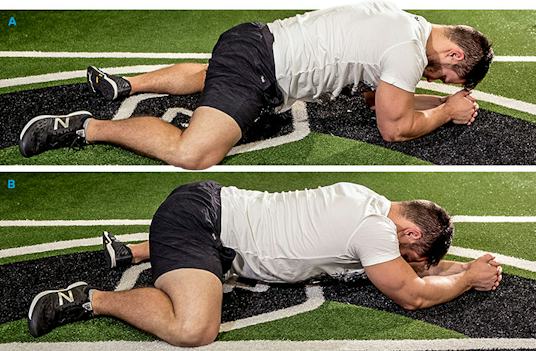How many times have you seen someone warm up for a squat workout with a set of 10 with the bar. This epidemic plagues most gyms around the country.
By performing simple hip flexor stretches, in particular the frog stretch, you will be able to increase your range of motion, thereby maximizing your squat numbers.
When using resistance bands for hip flexor stretches, the Frog Stretch trumps them all. The Frog Stretch is a staple hip flexor stretch at Diesel Strength and Conditioning for an upcoming squat workout, or for general pain alleviation in the low back.
Using Resistance Bands for Hip Flexor Stretches
To perform the Frog Stretch get in quadruped position, meaning you will be on your hands and knees. Before you do any movement, make sure you neutralize your spine.
When talking about a neutral spine, we are referring to your position. To keep a neutral spine, maintain a flat back from the top of your head all the way to your tailbone.
The Frog Stretch is a stretch where you vary the width between your knees and abductors depending upon hip mobility. Once you have established this, start rocking back and forth into your squat position.
This movement is a rehearsal of the squat movement pattern, reinforces a neutral spine while you move into a flexion pattern. Make sure you vary the width of your knees as your hips start to open up.
Once you are comfortable in this pattern, you can add a resistance band to increase the stretch tension. Place the resistance band around your back, then around each knee.
After the band is in place, rock back into your original position and begin the Frog Stretch again. The resistance band adds a little traction on your low back, and helps you move your knees into a wider position.
Mixing up your movements in the frog stretch allows you to find your tight spots, giving your body the maximum hip flexor stretch possible.


)





